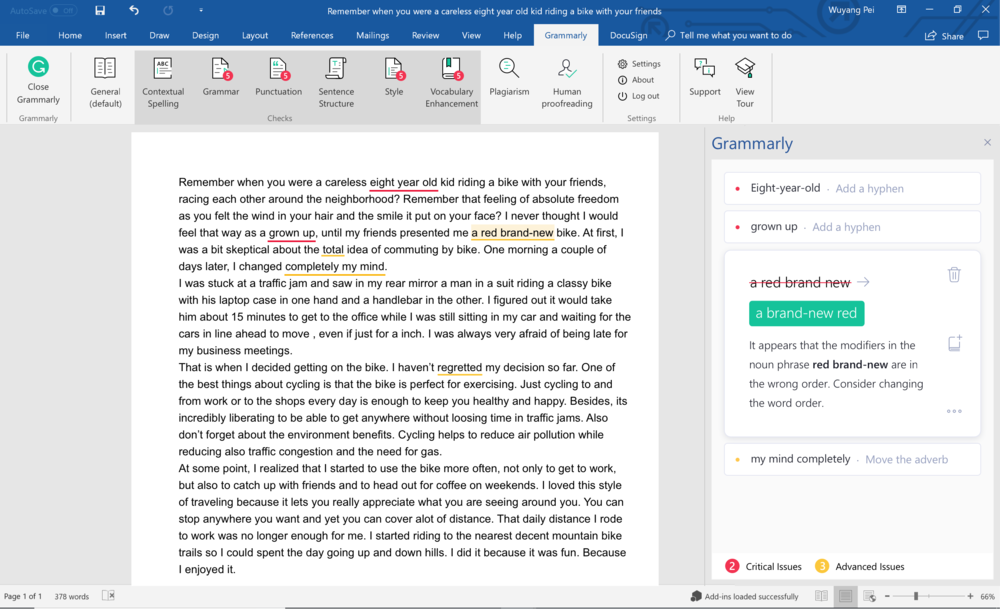Quality Blog Content: What Is It and How Do You Make It?
What is high-quality blog content? Quality blog content answers a question, solves a problem, entertains, or otherwise gives people the information they are satisfied with. It is clear and accurate, easy to share or reference, and achieves a goal, whether that’s converting leads, driving traffic, or something else that fits in with your business objectives.
All of your pages, especially your home page, should have high-quality content so that it attracts visitors and other webmasters who will link to your content and expand its reach across the web.
“Provide high-quality content on your pages, especially your homepage. This is the single most important thing to do. If your pages contain useful information, their content will attract many visitors and entice webmasters to link to your site. In creating a helpful, information-rich site, write pages that clearly and accurately describe your topic. Think about the words users would type to find your pages and include those words on your site.”
Bookmark this page for a handy reference guide that will keep you on track, creating genuinely useful quality content, connects with your audience, and helps you do well on Google.
So here’s how to create high-quality blog content that generates SEO results…
1. Start with an Original Content Idea
High-quality blog content starts with an original idea. Creating unique content for your site is essential, but this doesn’t mean that it has to be something nobody has ever written about before. The key is to ensure that your content, even if it’s about a popular topic, approaches the subject matter in a new way.
Google works hard to showcase pages with unique, distinct information when returning search engine results. Other search engines use similar search ranking factors. If your page has content that is identical or very similar to a page somewhere else, it won’t show up the way you want it to. Search engines want to give users unique and informative content that promotes a good user experience. Directing users to a site full of regurgitated content does not accomplish that. If content seems like it’s been intentionally duplicated to manipulate rankings and deceive users, Google might remove it from appearing in search results at all.
So, how do you create something original? If you have experience with the topic, apply your own insights. You can write existing research, data, and information in your own voice, ideally connecting to something your business is offering to users.
Before you begin your topic research try starting with just a piece of paper and your thoughts on the subject. This exercise will give you your starting point from which research can help you fill in the blanks and flesh out your ideas.
2. Have a Content Strategy
Your content outline is part of a broader content strategy. Before you sit down and write an article or create any other content for your blog, you should understand why you are writing the content. Identify its objective.
Your goal should guide what you choose to write about and how you angle it to your audience. This approach is especially effective when you have done the work to define your target audience and what will engage and interest them. As a general rule, focus on customers rather than selling.
What actions do you want the reader to take? Make sure that your content aligns with these desired actions. Furthermore, be sure to include a call to action within your content so that users know what to do with it.
It would help if you also outlined how you will measure your content’s performance as part of your content marketing strategy. It’s easy to think an article is doing well because you feel good about what you wrote, but only real numbers and stats will tell the truth.
3. Do Your Content Research
Above report created using https://www.semrush.com/topic-research/
Now you should be at the content research stage. This stage should not be overlooked when creating a quality blog post. Luckily, there are many tools and sites available to make content research work well for you.
When researching ideas and concepts for your content, you will need to understand search intent. This means putting yourself in the shoes of someone whom you hope lands on your website. Think about what they are looking for and what they want to do with that information.
Recommended Research Tools:
You can analyze a search engine results page to dig into intent via keyword research, making Google a very powerful tool as you do your research.
Using a Q&A site like Quora, take a look at what kinds of things people are asking about in regards to topics that relate to your organization. You should also check out what types of answers are best-received then create great content that answers a frequently asked question, noting which Quora answers are appealing and why you should be able to attract similar users to your own site.
See what kind of statistics and data you can find with research, backing up any information or ideas you are sharing with real numbers. People trust statistics. Being able to prove what you’re writing about with hard data will help you build trust and give more authority to your content.
One easy way to create compelling content is to keep an eye on news headlines and use those topics to inspire your writing. Check Google News for related news headlines as a jumping off point for timely content.
Finally, spend some time researching semantically related keywords to uncover sub-topics and themes you can use to expand your content and add more search-engine-friendly wording. Filling out your content with semantically related keywords helps Google and other search engines see that what you have written is useful, and it can bring in more viewers. Check out LSIGraph to see what semantically related keywords could work for you.
4. Optimize Your Content
Image Source: https://www.grammarly.com/
When writing a blog post you should be focused on providing valuable information. Once your don'e writing your blog post follow-up by going back through and looking for opportunities to optimize your written content. Optimizing your content is like honing a blade so that it holds an edge and cuts effectively. Using content that is not optimized is a bit like carrying a butter knife onto a battlefield. Grammar, readability, and formatting have more of an impact than you might think. If your content isn’t easy to read or understand, they will click away before achieving the objective you’ve carefully set out.
Grammarly is a web service that makes it easy to create stronger content, using AI to help writers improve their work. Readable does the same for readability, ensuring that your content is accessible, easy to understand, and targeted to the right audience.
Formatting is more about how you organize your content rather than what it contains, but its importance can't be overlooked. Following a consistent format for all of your content sets standards that your readers will come to expect. It also helps with keeping your content scannable and approachable.
We recommend creating a strong headline. Try this analyzer or one of our other favorite headline tools. Follow this by separating related blocks of content with sub-headers.
Imagery, whether in the form of photos or illustrations, breaks up an article and adds another element of interest. Then, links to both trustworthy third-party resources and your own related content help expand the reach of your article while providing readers with additional information and resources.
Check your content for keywords and semantically related keywords, but resist any urge to stuff a bunch of keywords into what you write. If you have done your research, you should have a list of keywords that can be included in the content naturally. Robots may analyze your content, but you don’t want it to sound like it was written by one.
Another great way to optimize your content is to create a content brief. Doing this is especially useful when you are asking someone else to generate the content.
A content brief should include features such as:
The title of the article.
The core message you want to get across.
Who the target audience is.
Problem(s) the article is solving.
Take-away(s) the reader should have.
Objective of the content.
Target word count
Related resources
etc.
5. Create Trust with Your Readers
The best content in the world won’t make a difference if you don’t have readers who trust you. People are increasingly reluctant to believe what they read online, and you will need to keep this mind if you want to cultivate an audience.
Start with a good blog design, which is accessible and aesthetically pleasing.
Make sure that your information is accurate.
Add quotes from other industry experts where applicable.
Be upfront and clear about your intentions.
Write conventionally.
Make it easy for readers to contact you if they have questions, comments, or concerns.
6. Make Improvements After Publishing
Image Source: https://webmasters.googleblog.com/2018/01/introducing-new-search-console.html
Hitting ‘publish’ doesn’t mean it’s the end of your work on a piece of content. You can, and should, review Google Search Console a few weeks later to find areas of opportunity upon publication, reworking content and/or the title to be more engaging to users.
You can always return to existing content to implement new keywords or adjust what is already there. Furthermore, it’s good practice to keep an eye out for broken images, links to fix, and information that would benefit from an update.
Conclusion
Creating quality blog content is all about the balance between what appeals to search engine algorithms and what appeals to real live users who need information. Please go ahead and share this page with anyone who would like to create better content or have better content created on their behalf.
At Blog Hands, we’re well-versed in this art. We are on-hand to answer your questions about everything from your content brief to your content quality. We can help you or your agency with the content you need, so get in touch today!
Video Recap
This video is made using InVideo.io





